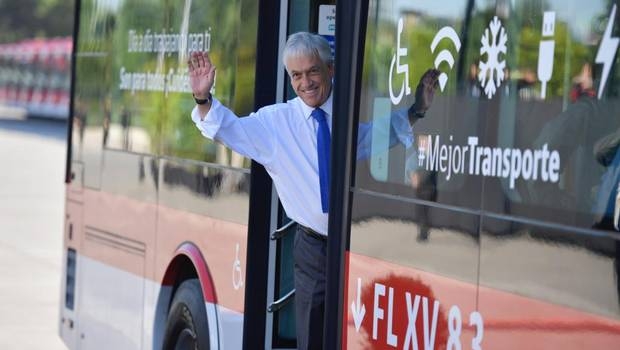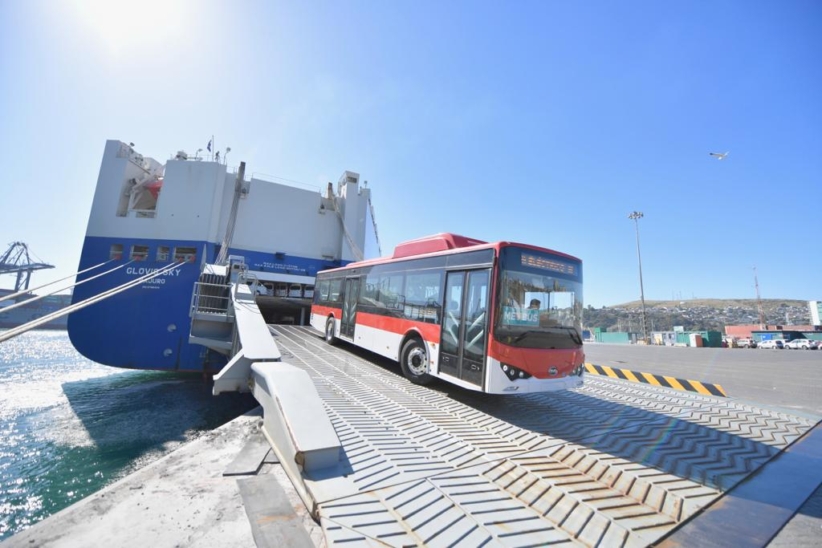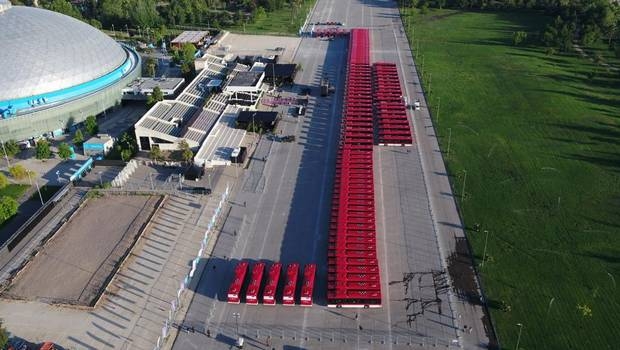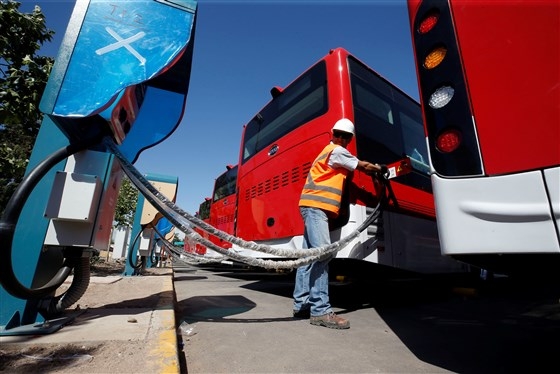
SANTIAGO – President Sebastián Piñera on Thursday unveiled the first 100 electric buses from China that will run on Santiago roads as part of an ambitious plan to revolutionize public transport system in the South American country.
The 12-meter-long buses will allow the mobilization of up to 81 people – 30 seated and 51 standing – providing them a silent and pollution-free journey. Other features highlighted by the president is the Wi-Fi and free USB ports on the buses.
El Pdte @sebastianpinera junto a la Ministra @GloriaHutt de @MTTChile presenta los primeros 100 buses eléctricos del transporte público #MejorTransporte pic.twitter.com/udUpzH0cz2
— Prensa Presidencia de Chile (@presidencia_cl) December 13, 2018
Piñera each vehicle will have enough capacity to run for 250 kilometers, “which will allow completing up to four routes,” and will have a useful life of 10 years.
“Chile will be second only to China as a nation with the greatest quantity of electric buses in the world,” the president said a ceremony in the capital city.
China has 99 percent of the 385,000 electric buses on the road worldwide last year.
The 100 that arrived Chilean port of San Antonio at the end of November, were manufactured by Chinese firm BYD Electronic International Co Ltd, financed by the local subsidiary of the Italian power utility Enel Generacion Chile SA and will be operated by Metbus, a private Chilean company.

Another 100 added to the Santiago fleet are being financed by French energy generation firm Engie Energia Chile SA and manufactured by China’s Zhengzhou Yutong Bus Co Ltd.
In total, there will be 690 buses of the Chinese brand BYD that will enter the system, 200 electric and 490 Diesel Euro VI, Piñera announced.
This makes Chile a country with largest electric bus fleet in the Latin America region.

Chile’s ambitious plan to face down its capital Santiago’s notorious smog problem includes the rollout of electric scooters, cars and taxis, as well as lorries for use in the mining industry. Authorities say they want electric vehicles to account for 100 percent of public transportation on the roads by 2050.
“We want to reduce up to 40% of the emissions of gases that generate the greenhouse effect,” the president explained.
Esta mañana el Presidente @sebastianpinera presentó la nueva flota de buses eléctricos para el @Transantiago ⚡️? Avanzamos hacia una movilidad más sustentable ⚡️?? #Electromovilidad #MejorTransporte pic.twitter.com/yfFFPtddGa
— Energía (@MinEnergia) December 13, 2018
The operation and maintenance costs of an electric bus are also around 70 percent less than those of a diesel engine, according to Chile’s Ministry of Transport.
The new buses, which are due to make a debut on Saturday (Dec. 15), will be trailed on the route 516, transiting through five communes of the Metropolitan region.
¡Ya es una realidad! Los primeros 100 buses eléctricos comenzarán a circular este sábado 15 por algunas calles de Santiago, presentando un #MejorTransporte para miles de capitalinos ?❤️ #ChileEnMarcha pic.twitter.com/WgEFU6xfxF
— Ministerio de Transportes y Telecomunicaciones (@MTTChile) December 13, 2018
Piñera also indicated that the Transantiago was a bad public policy and did not contribute to improve the quality of the service, which is why his government decided to implement this renovation to the capital’s public transport.
He hoped these new machines will not only raise the standard of the system but also protect the environment.
Chile: Piñera unveils electric cars fleet for government use
Mineral-rich Chile — which is not only the world’s largest copper producer but also the second-largest producer of lithium, a key component in electric vehicle batteries — aims to increase the number of electric vehicles tenfold by 2022.
Just last month, the Chilean government took delivery of six BMW i3 electric cars destined for ministerial use.
It also plans to raise the number of existing 40 public charging stations — half of them in Santiago – to 200 in total, according to the energy ministry.

A UN study says if the present fleets of buses and taxis spread across 22 Latin American cities were replaced by electric vehicles today, by 2030 almost $64 billion in fuel would have been saved, and 300 million tons less of carbon dioxide equivalent would have been pumped into the air.



